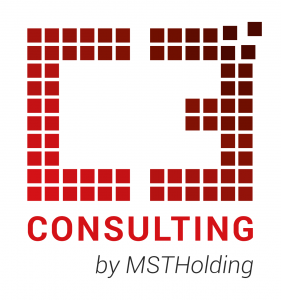At Consulting C3, we firmly believe that high-performance teams are not born by chance—they are built with intention, strategy, and support. Recently, we had the opportunity to work with a renowned multinational company in the retail sector with a clear goal: to elevate the performance of their leadership and middle-management teams without compromising their emotional and mental well-being.
The challenge was ambitious: to transform the way teams managed their time, energy, and productivity in a high-demand environment. Above all, we aimed to help them develop a key skill for times of overload: learning to say “no” with assertiveness and responsibility.
Our Starting Point: Emotional Balance and Sustainable Performance
Today’s organizations operate in volatile, uncertain, and demanding contexts. That’s why our approach is based on a clear premise: it’s not about working more, but working better. This means equipping teams with tools, skills, and a culture that supports focus, strategic prioritization, and long-term motivation.
At Consulting C3, we designed a tailored strategy based on three key pillars:
1. Smart Time Management
One of the primary levers of change was rethinking how time was managed within teams. Instead of traditional to-do lists, we proposed a comprehensive approach that included:
- Alignment of weekly and monthly priorities.
- Strategic use of digital tools like Slack and Microsoft Teams, applying clear criteria to avoid unnecessary interruptions and foster deep work blocks.
- Design of daily rituals to mark the beginning and end of the workday, along with dedicated moments for collaborative work and individual focus.
We also worked to instill a culture that values planning as an investment, not a waste of time. This mindset shift helped reduce the volume of urgent but low-impact tasks and encouraged time management aligned with the organization’s strategic goals.
2. Stress Prevention and Emotional Well-Being
We knew that productivity could not be sustained without proactively addressing the chronic stress often experienced by teams in high-pressure environments. Therefore, we deployed a wellness strategy based on three pillars:
a) Digital Wellness Solutions
We introduced and supported the use of apps like Headspace and Petit Bambou for mindfulness practice, and platforms like Wellhub to promote physical and mental health. We also encouraged the use of reminders for active breaks through Teams and Slack.
b) Workload Review
Together with the teams, we analyzed task distribution, autonomy levels, and clarity in role definitions. This allowed us to correct imbalances and empower managers to take greater control of their time.
c) Emotional Conversation Spaces
We facilitated workshops and group dynamics where teams could openly discuss their emotions, concerns, and needs. These sessions were essential to build trust, detect early signs of burnout, and design collective solutions.
3. Development of Essential Soft Skills
We know that no strategy is truly effective unless it is backed by strong human skills. That’s why a core focus of our intervention was strengthening the teams’ soft skills. We concentrated on:
- Assertiveness, to say “no” clearly, without guilt or aggression.
- Emotional management, to lead under pressure and make decisions without impulsive reactions.
- Empathy, to improve collaboration and mutual support.
- Strategic prioritization, to distinguish between urgent and important tasks and make decisions aligned with business objectives.
Effective Communication: The Foundation of Collective Balance
Throughout the process, it became clear that the way teams communicate makes all the difference. Therefore, we reinforced key aspects such as:
- Clarity in instructions and goal-setting.
- Transparency in information flow.
- Respect for response times.
- Constant, constructive, and timely feedback.
In moments of high workload, we helped establish the mindset that saying “no” is also a way to protect the “yes”—to quality, well-being, and sustainable results. This new perspective had an immediate impact on how teams prioritized tasks, distributed workload, and cared for one another.
How Can You Tell if a Team Is Ready for High Performance?
One of the tools we implemented was an internal self-assessment, enabling each team to honestly answer questions such as:
- Do we have clear weekly priorities?
- Are we using our technological tools effectively?
- Do we have real opportunities for rest and disconnection?
- Can we express our boundaries freely?
- Is assertiveness and feedback a regular practice?
- Are we noticing signs of burnout or emotional overload?
This exercise not only helped identify areas for improvement but also triggered specific action plans that directly impacted motivation, team climate, and collective performance.
Results Achieved
Thanks to this intervention, the company observed:
- Increased organizational clarity and team autonomy.
- Higher satisfaction levels among middle managers and executives.
- A significant reduction in chronic stress and emotional burnout.
- More cohesive, proactive, and focused teams.
At Consulting C3, We Believe in the Sustainable Development of People and Organizations
This project reaffirms our belief that high-performance teams are not built solely on KPIs but on culture, well-being, and human skills.
In a world where “doing more” seems like the only answer, we choose to teach how to do better—with purpose, clarity, and balance.

